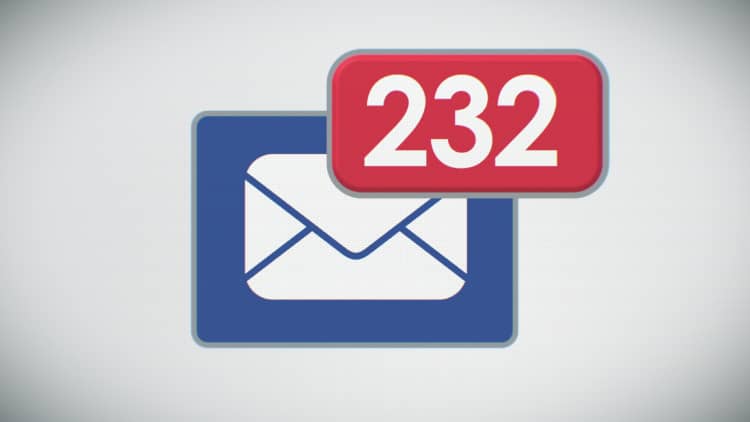Drafting the perfect email that will capture your recipients' attention is no easy feat.
The average office worker now receives a staggering more than 100 emails a day. Boomerang CEO and email productivity expert Alex Moore has made it his mission to help professionals craft better emails that stand out from the clutter.
Moore and his team conducted a study last year through which they examined the emails sent by their users to see what factors led to one email having a higher response rate than another.
Below, Moore shares with CNBC Make It the surprising email mistakes that could be harming your chances of a reply:
1. Writing above a third grade reading level
Many people try to impress their colleagues with fancy jargon, but Moore argues that using big words to explain simple concepts is one of the biggest mistakes a professional can make.
"I think if you write an email that's too much to process people will just think, 'Oh I don't have time for this,'" says Moore.
Boomerang's research indicates that emails written at a third grade reading level have a 36 percent higher chance of getting a response than emails written at a college reading level, and a 17 percent higher chance of getting a response than emails written at a high school reading level.
"It's just much easier to write a clear message so that people know what they need to do with it," says Moore.
2. Writing long subject lines
According to Moore, emails without a subject line get a roughly 14 percent response rate, compared to emails with a subject line, which get over a 30 percent response rate.
But exactly how do you craft the perfect subject line that's just the right length and that increases your chances of getting a response?
Moore says the key is to "be short and quickly convey what you need to the reader as quickly as possible."
Research from Boomerang shows that subject lines with just three to four words received the most responses.
3. Writing in a neutral tone
While you may be afraid to inject too much emotion into your email, Moore suggest that not doing so can actually do more harm than good when sending a message.
According to his company's research, emails that were slightly to moderately positive or slightly to moderately negative received a 10 -15 percent greater response rate than emails that were completely neutral.
Moore also suggest that professionals should not be afraid to include more opinions in their emails and to be subjective.
"The more opinionated the content of the email, the higher the response rate climbed," he wrote in a blog post.
Like this story? Like CNBC Make It on Facebook
Don't miss:




